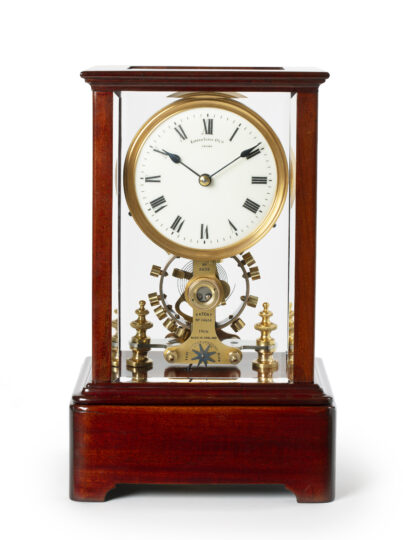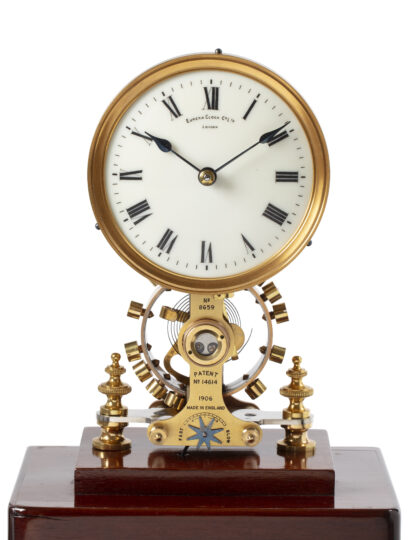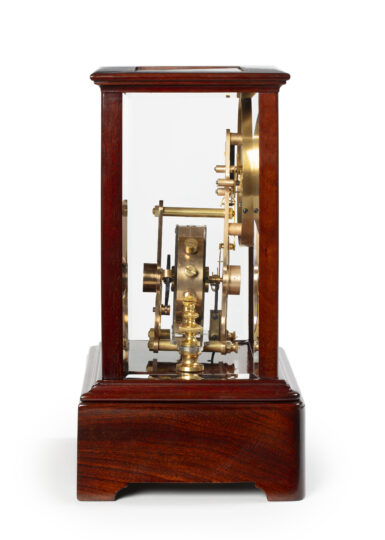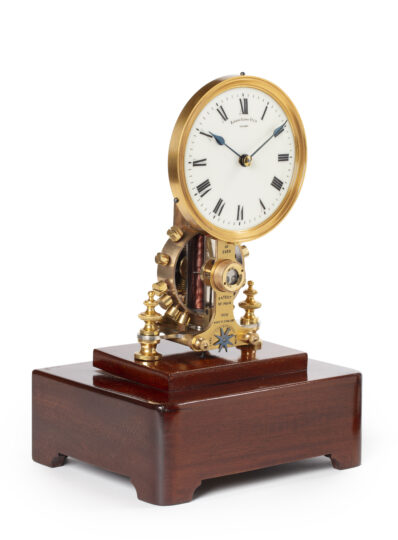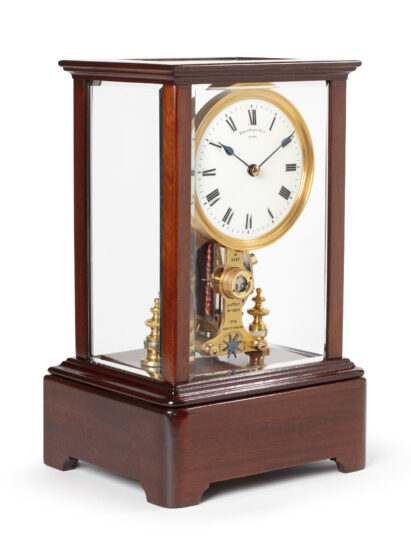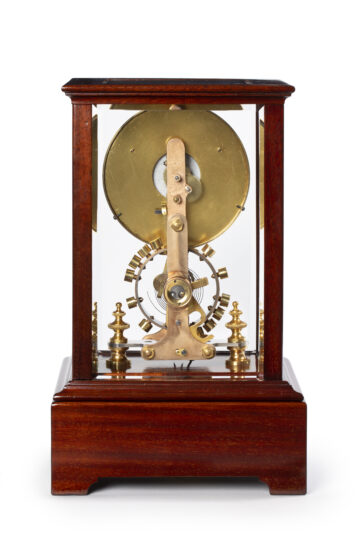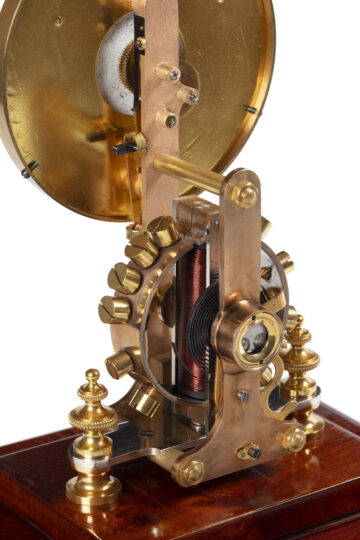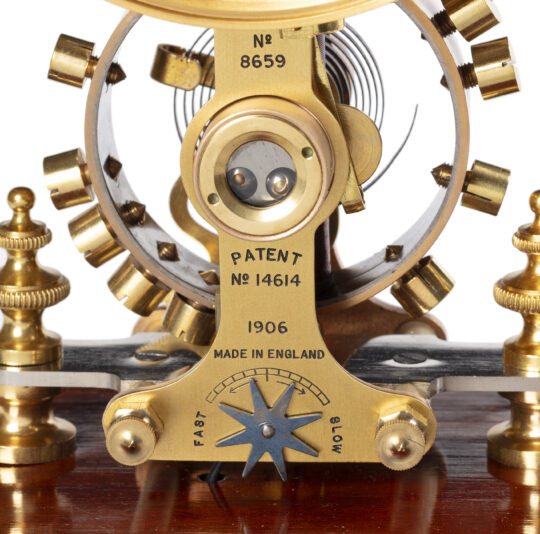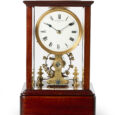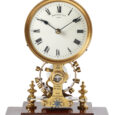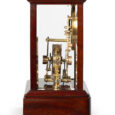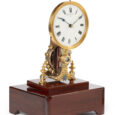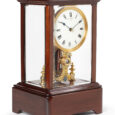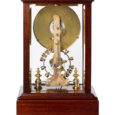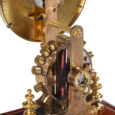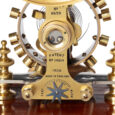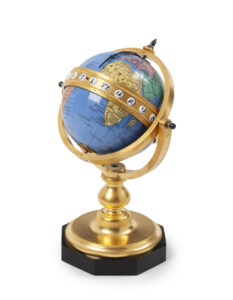EUREKA CLOCK Eureka Clock Co Ltd, London Ca. 1906 England
M&R13a
EUREKA CLOCK
Marked and numbered: Eureka Clock Co Ltd, London No. 8659 Patent No. 14614
Made in England
Dated 1906
England
Movement
Shaped movement with an electrical-magnetically impulsed balance wheel. This vertically positioned balance wheel has an electromagnetic coil along its diameter with a contact point. When the balance rotates this contact point touches another contact point which is connected to the power source (two batteries). In this way the coil becomes magnetic and impulses the balance, so that it keeps on oscillating. The movement can be regulated with a turnable blued steel star on the front, its direction being indicating by the words fast and slow.
Dial
The circular, white enamel dial has a black Roman chapter ring with five-minute and minute divisions. The time is indicated by a fine pair of blued steel spade hands. The dial is signed under the XII as follows Eureka Clock Co Ltd, London.
Case
The mahogany case has facetted glass on all sides. It has a glazed top, which rests on a wooden base, covers the movement entirely and can be lifted to access it. The movement has a brass frame, which is secured with two screws to the bottom plate. It has two shaped plates between which the balance rotates. The balance arbor is born by two ball bearings on either side, visible through a circular window. The front plate of the frame is marked as follows: No. 8659 Patent No. 14614 1906. Here is also the star for the regulation (fast – slow). The batteries for the electromagnet are situated in the base.
Duration: about one year (two batteries)
Height 34 cm.
Width 21 cm.
Depth 17 cm.
Literature
– J. Zeeman, Het klokkenlexicon, p. 184.
– Nederlands Goud-, Zilver- en Klokkenmuseum, Elektrische tijdaanwijzing, plates 19 and 20.
– Loomes, Watchmakers and Clockmakers of the World, p. 251.
Eureka clock
This type of electric clock was invented by an American called Timothy Bernard Powers in 1906. From 1906 until 1908 he was awarded eleven foreign patents for his invention. They were made by The Eureka Clock Company in London in the period 1908-1914.

